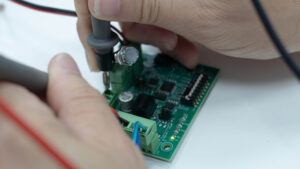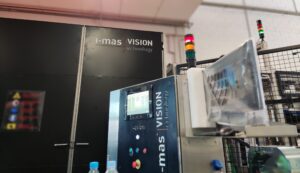Developing an electronic product goes far beyond making a board that works in the laboratory. The decisions made during the initial design phases have a direct impact on production costs, delivery times, and the feasibility of scaling the product once it has been validated.
It is common for many teams, especially startups or companies with no previous experience in hardware, to make mistakes that at first glance seem minor, but in the medium term end up generating cost overruns, redesigns, or even the need to completely redo the system.
In this article, we analyze the five most common mistakes in electronic development and how to avoid them from the perspective of industrialization-oriented design.
Select components without analyzing availability and volume pricing
In the early stages of design, engineers often select components based solely on their technical functionality, immediate availability, or previous experience. However, an ill-informed decision at this stage can have significant consequences when moving into the prototyping, pre-production, or volume manufacturing stages.
For example, it is common to choose a microcontroller or sensor with good performance, but which has limited availability or a high price outside of prototyping channels. If, during the industrialization phase, that component becomes difficult to obtain or its price increases dramatically, the team is forced to redesign the board, generating unnecessary costs and delays.
Furthermore, some components commonly used in laboratory environments (such as modules with non-standard encapsulation or niche products) do not have industrial versions and are not approved for mass production.
To avoid these problems, it is essential to integrate a supply chain analysis from the outset, considering:
- Actual availability from global distributors (not just development samples)
- Component lifecycle (EOL, NRND, etc.)
- Functional or footprint alternatives
- Cost at different volumes
This medium- and long-term vision allows for more sustainable decisions that do not compromise the future design of the product.
Do not apply design for manufacturing (DFM) criteria.
An electronic design may work perfectly in a validation environment, yet present serious problems in the production phase. This mismatch occurs when design for manufacturing (DFM) criteria are not applied.
Among the most common mistakes are:
- Tracks too thin for current capacity
- Pads with minimal spacing causing solder bridges
- Misaligned or difficult-to-access connectors
- Plate formats that are difficult to assemble on an automatic line
- Component layout that prevents optical inspection
All of this generates additional costs derived from manual processes, higher rejection rates, the need for rework, or longer assembly times.
The design must take into account the limitations and capabilities of the production process from the outset. This involves knowing how the board will be assembled (wave soldering, reflow, manual assembly), what tolerances are used, how it will be inspected, and whether there are specific requirements for cleaning, encapsulation, or tropicalization.
Including these criteria in the design phase not only reduces costs, but also increases product reliability and shortens manufacturing times.
Design hardware and firmware independently
When electronic design involves microcontrollers, wireless communications, or smart sensors, it is essential that hardware and firmware development be carried out in a coordinated manner. Failure to do so is one of the mistakes that most complicates and increases the cost of the process.
Some typical examples of problems arising from this isolated approach:
- Incorrect pin assignment without considering future firmware requirements
- No debug signals, UART, or update interfaces
- Power failures due to inadequate definition of low-power modes
- Inability to update firmware in the field due to lack of bootloader or interfaces
Firmware must be present in the design from the outset: defining how the system boots up, how it is updated, what events it must manage, and how it recovers from errors. This allows key elements such as watchdogs, free GPIOs for debugging, interrupt management, and critical state validation to be anticipated.
Well-designed architecture reduces the number of functional errors, speeds up software development, and avoids costly modifications in advanced stages.
Not defining the test strategy from the schematic phase onwards
An electronic design that does not consider from the outset how it will be verified in production is bound to incur unnecessary costs and lower quality control.
This error occurs when the following are not included:
- Accessible pads for electrical testing
- Communication interfaces for functional testing (UART, I2C, SPI)
- Pins for in-circuit programming
- Status signals that allow operation to be checked without firmware
Factory validation, whether manual or automated, must be fast, reliable, and repeatable. If the design does not provide for this, improvised solutions (such as manual probes, complex jigs, or destructive testing) are required, which increase production costs, time per unit, and errors in the field.
Design for Testability (DFT) allows efficient strategies to be defined from the schematic phase onwards. These strategies must be consistent with the firmware, the assembly environment, and the planned test tools.
Developing without a complete product vision or scaling plan
In many cases, electronic development is carried out in isolation, without taking into account how the rest of the product will be integrated: mechanics, software, packaging, certifications, assembly, and maintenance.
This translates into technical decisions that work well in the laboratory but are problematic when it comes to production or commercialization. For example:
- Connectors that do not fit the housing
- Components that do not comply with CE/FCC regulations
- Inefficient power supply schemes for batteries
- Products that are difficult to assemble or repair
A design with a partial vision can lead to multiple iterations, certification issues, compatibility errors, or costly redesign requirements.
That is why it is essential to integrate a comprehensive vision of the product from the outset: how it is manufactured, how it is assembled, how it is tested, how it is updated, and how it is maintained. This vision must guide every technical decision in electronic development.
The errors described are not usually detected in the laboratory, but rather in the stages when the product should already be working in the hands of the customer. That is where each technical failure has a cost multiplied by the number of units, delivery times, and brand image.
A well-designed electronic system is not only functional, but also viable, replicable, testable, and scalable. Anticipating these aspects from the outset is not a luxury, it is a necessity.
Would you like to review your electronic architecture before moving on to prototyping? Or do you need support to ensure that your design is ready for production?
Get in touch with us. We will help you transform your idea into a robust, industrializable electronic product that is ready to scale.



